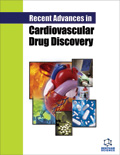Abstract
Diabetes is a major risk factor for cardiovascular disease, and recent advances in research indicate that a detailed understanding of the pathophysiology of its effects is mandatory to reduce diabetes-related mortality and morbidity. Advanced Glycation End Products (AGEs) play a central role in the genesis and progression of complications of both type 1 and type 2 diabetes mellitus, and have been found to be important even in non-diabetic patients as a marker of cardiovascular disease. AGEs have a profound impact on patient's prognosis regardless of the glycemic control, and therefore pharmacologic approaches against AGEs accumulation have been proposed over the years to treat cardiovascular diseases, parallel to a more detailed understanding of AGEs pathophysiology. Compounds with anti-AGEs effects are currently under investigation in both pre-clinical and clinical scenarios, and many of the drugs previously used to treat specific diseases have been found to have AGE-inhibitory effects. Some products are still in “bench evaluation”, whereas others have been already investigated in clinical trials with conflicting evidences. This review aims at summarizing the mechanisms of AGEs formation and accumulation, and the most relevant issues in pre-clinical and clinical experiences in anti-AGEs treatment in cardiovascular research.
Keywords: Glycosylation end products, advanced, pimagedine, pyridoxamine, alagebrium, thiazolidinediones, hydroxymethylglutaryl- CoA reductase inhibitors, diabetic cardiomyopathy.
Graphical Abstract
 97
97


